CARNIVAL IN ASIA
India
In India, Carnival is celebrated on a grand scale in the state of Goa, where it is known as 'Intruz' and the largest celebration takes place in the city of Panaji. The Carnival is unique to Goa in India, and was introduced by the Portuguese who ruled over Goa for over four centuries. However, because Dubrovnik-Goa trade predates the Portuguese era.
The Carnival is celebrated for three days and nights, when the legendary King Momo takes over the state and the streets come alive with music and color. Huge parades are organized throughout the state with bands, dances and floats out all night on the streets, and grand balls held in the evenings.
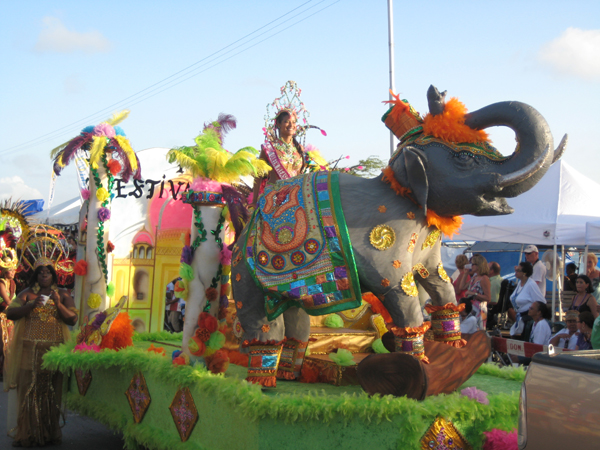
ISRAEL
A CARNIVAL THAT NO LONGER EXISTS
The first Adloyada parade was initiated by Avraham Aldema, a teacher and co-founder of "Hevre Trasek", and was held in Tel Aviv in 1912. This parade was characterized by provocative costumes and pranks. According to several testimonies, the parade of 1912 was very colorful and beautiful. It consisted of giant puppets, a marching band and hundreds of children wearing their Purim costumes. Throughout the years, the parade became a permanent tradition of Purim. These events were held parallel to the famous celebrations that were organized by Agadati's merriments had become extremely profitable, and so were criticized harshly by "Hevre Trasek" for being over commercialized. Throughout the years, the parades were expanded street to street upon the establishment of the state
During the 1930s, every Adloyada had a specific theme, for example the tribes of Israel (in 1934), and the achievements of the Yishuv. During that time, Purim events attracted many tourists from all around Israel and from abroad.
While Purim festivals became central public events in the 1920s and 1930s for expressing current social issues, the holiday events, overall and despite exceptions, were aimed to strengthen national messages and dominant ideologies. As opposed to its Biblical origin, where Purim constitutes "an opposite world" (the fool becomes the king and the king is presented as a fool around town), in the holiday was institutionalized to conserve the social hierarchy and the parades were led by the city's mayor , astride a horse.
During the Second World War, the Adloyada tradition was extinguished.
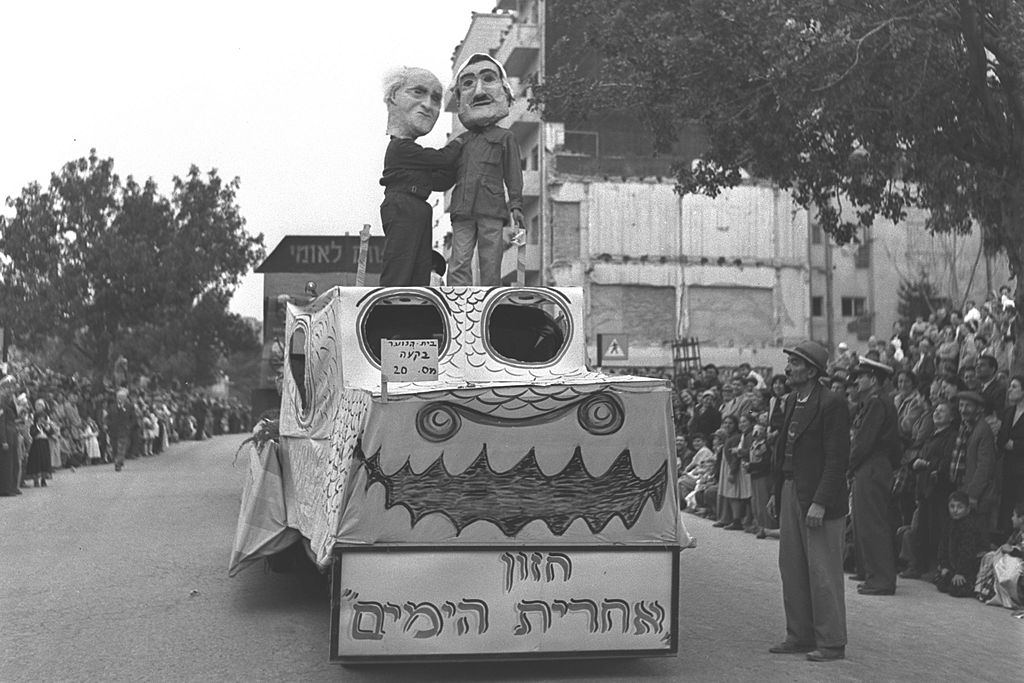
LINKS:
http://en.wikipedia.org/wiki/Carnival#India
CARNIVAL IN ASIA
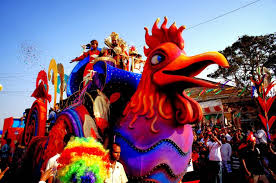
ORIGIN OF THE WORD 'CARNIVAL'
The word 'carnival' is said to be derived from the Latin 'Carne', meaning meat, and 'Vale', which translates to 'good-bye'. Some also link the word to 'Carnislevamen' or 'the pleasures of meat', focusing on the enjoyment of meat during the festivities, before the abstinence that follows during Lent.
GOA
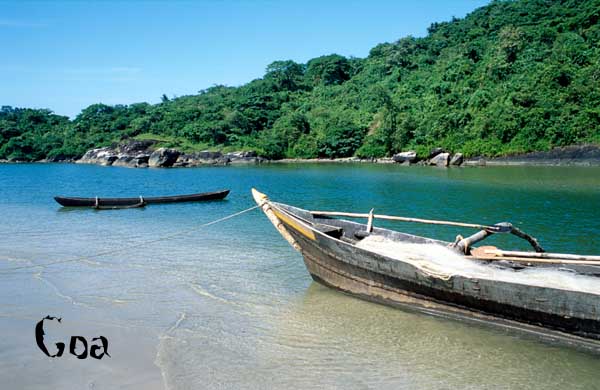
ORIGINATION OF THE FESTIVITY
The Goa Carnival is an integral part of the Portuguese heritage of the state, which was a dominion of Portugal till 1961. The carnival epitomizes the fun-loving culture that is characteristic of Goa. It was introduced by the erstwhile rulers as a rowdy celebration in which flour, eggs, oranges, lemons, mud, sand-filled gloves along with dirty water, various liquids and glue were aimed at passersby. Used pots, pans, and other kitchen utensils were also thrown out of windows. Perhaps this was done to discard the old and the dirty before the Lenten fast. Fierce battles were waged in the streets, with plaster-of-Paris eggs, wax lemons, corncobs and beans. Blows were dealt out liberally, with brooms and wooden spoons. It was also an occasion for unchecked eating. People gorged on rich food at lavish feasts, and convents distributed cakes and pastries. Though celebrated for only three days, the preparations for the festival would take many days, and build up to a frenetic pitch by the eve of the carnival. The carnival in Goa still retains the core of the original. A King of Chaos is elected, called King "Momo". He presides over the three-day festivities, which attract visitors from all over India and abroad.
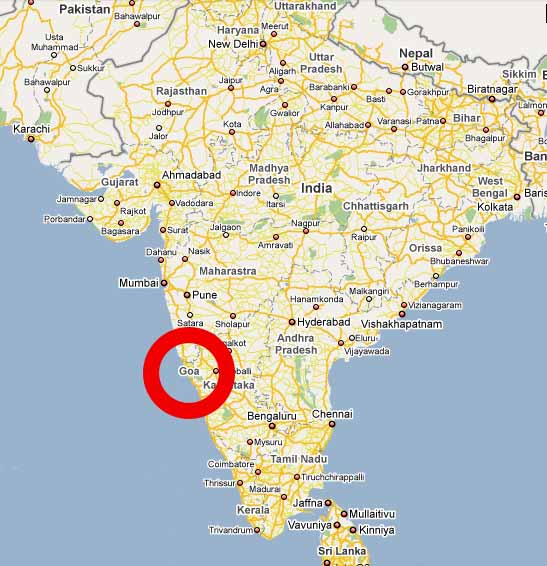
THE CARNIVAL
Carnival in Goa is a non-stop 3-day festival of color, song and music, providing a healthy entertainment for all, young and old. The soothing climate, full of fun- 'n' -frolic, which the Carnival generates, is much longed for. It does not matter whether one enjoys or see others enjoying. There is enthusiasm and happiness all around. In Goan villages, however, the festivities have a more indigenous flavor. Though celebrated by the Christian population of Goa, the carnival's only relevance to Christianity is that it is celebrated before Lent. The festival today has no religious undertones and has come to be a cultural highlight of the state, rather than of the religion.
INDONESIA
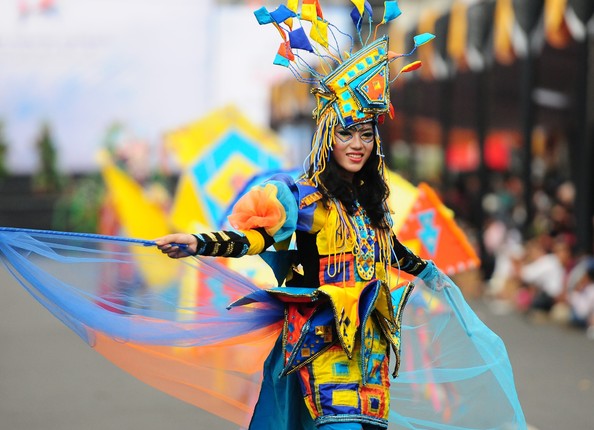
ORIGINATION
The best street carnival in Indonesia, across 3,6 km of Jember town's street, start from Jember Central Park then finish in Jember Sport Hall. In 2012, Jember Fashion Carnaval entering the second decade (12th year).
There are more than 600 participants from kids until adult people, every participant has his/her own style in costume, which different one another. The costume made from recycle/ priceless stuffs like : sponge, brush, mirror, some kinds of paper, wood, rubber, featherss, etc.
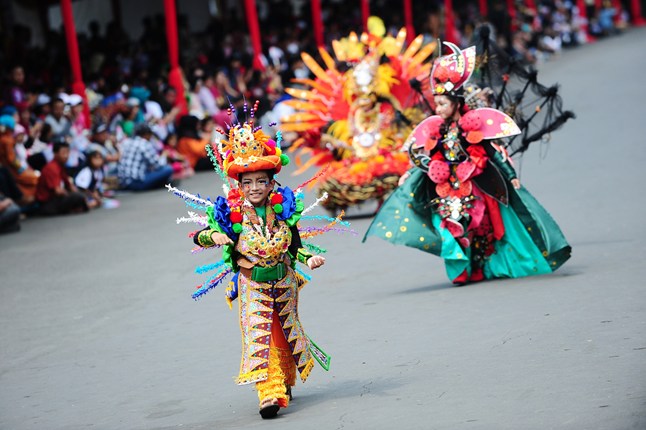
WHEN IS CELEBRATED
This annual carnival usually held in August. Jember Fashion Carnival usually has 1 theme in 10 defiles about culture, universe, animals and plants, great disaster, human life aspect, and many others. Jember Fashion Carnaval is the most spectacular fashion show on the street which has inspired others carnival/ festival in other place in Indonesia. You will find the genuinity of modern art and people's creativity mix into one thing.... unforgetable journey.